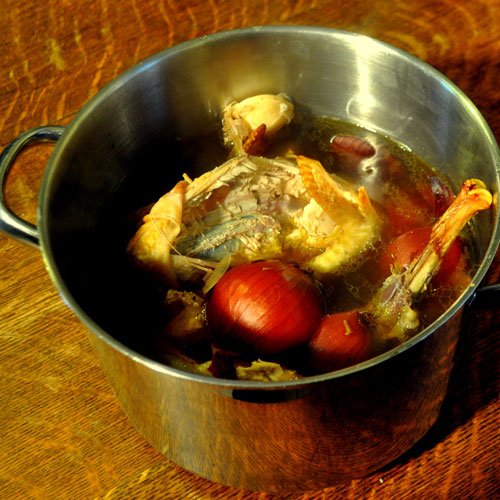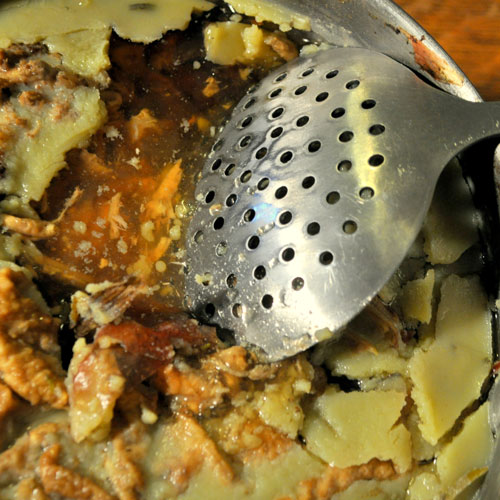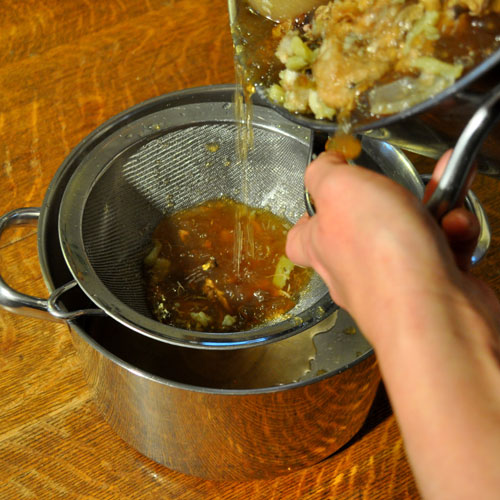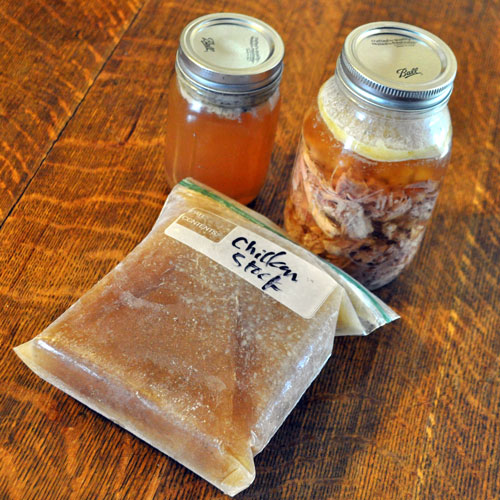What You SHOULD Be Doing With Those Leftover Chicken Bones
As I have mentioned in a couple of my previous articles, my husband and I, in attempts to eat healthier, eat a lot of chicken and eat rotisserie chickens about 2-3 times a month. Now, I am embarrassed to admit this, but after talking to my neighbors they asked me what I do with the chicken bones. I quickly told them, "I throw them out of course!...(sheepishly) What else would I do with them?!" They went on to tell me that I need to be making chicken stock with it, DUH! Sadly, I use chicken stock and chicken broth in recipes but I just buy them at the store and throw away my chicken carcasses without putting them to good use. Well, now I know what a double shame this is! Making your own stock is so great for many reasons including having WAY more delicious, slow-cooked flavor. It provides far more than flavor though. One cup of chicken broth packs almost as much protein as a cup of plain yogurt. Also, since chicken broth from the can at the store is known for being high in sodium, this allows you to control what you are putting in it and lower your sodium content if you desire.
Before I get into how to make your own chicken stock, since a lot of you probably already know how to make it, I would like to share a few of the amazing things about chicken broths (and other bone broths) and how to store it once you've made it.
Why Bone Broths Are Good For You
Bone broths are extraordinarily rich in nutrients - particularly minerals and amino acids. Bone broths are a good source of amino acids - particularly arginine, glycine and proline. Glycine supports the body's detoxification process and is used in the synthesis of hemoglobin, bile salts and other naturally-occurring chemicals within the body. Glycine also supports digestion and the secretion of gastric acids. Proline, especially when paired with vitamin C, supports good skin health. Bone broths are also rich in gelatin which improves collagen status, thus supporting skin health. Gelatin also supports digestive health which is why it plays a critical role in the GAPS diet. And, lastly, if you've ever wondering why chicken soup is good for a cold, there's science behind that, too. Chicken stock inhibits neutrophil migration; that is, it helps mitigate the side effects of colds, flus and upper respiratory infections. Pretty cool, huh?
How to Store Bone Broth
Bone broth can be stored in the refrigerator for no more than a week. You can also freeze it in ice cube trays, and transfer the frozen cubes of broth to a resealable freezer bag where they will keep for 6 months.
Chicken Stock Recipe
Serves: 12
Hands-on Time: 25 minutes
Total Time: 6-24 hours
INGREDIENTS
· 1 whole chicken carcass
· 2 onions, quartered
· 1 carrot
· 2 ribs of celery
· a few small cloves of garlic
· 3-5 quarts cold water
· 1 bay leaf
- a bunch of thyme
Directions:
1. Place the carcass of one roasted chicken in a stockpot or crockpot. Add two quartered onions, leaving the skins on. You can even save onion peels in a Ziploc bag in the freezer especially for use in stocks. Add a few cloves of garlic. Since you are not going to eat the garlic itself, there's no need to peel it. Include a couple of carrots and ribs of celery in large chunks. Cover the chicken, vegetables, and aromatics with cool water and simmer on low for at least an hour or for as long as 24 hours.
You can either prepare stock in a Crockpot or stockpot on the stove.

2. Remove the broth from the heat and let it cool, uncovered, in the fridge for several hours or overnight. A golden yellow layer of fat will form over the top of the pot when it is ready. Skim this layer off with a spoon. The broth below will be chunky and jiggly, almost like soft gelatin. The texture is so thick not because of its fat content, which is negligible, but because the liquid is especially high in collagen-yet another health benefit of this home-cooked, slow-cooked food.

3. Heat the pot a little so that the stock thins out enough to pour. Strain the broth through a mesh sieve (or a colander lined with cheesecloth) into a second large pot or bowl. If you are using the carcass of a roasted chicken to make broth, there probably won't be much meat to sort through.

4. Use the broth right away for soup, or divide it into glass quart jars or Ziploc bags for freezing.
TIP: Be sure to allow about an inch of headspace at the top of the jars or bags so the liquid has enough room to expand when it freezes, and place a dish underneath the jars or bags while freezing to catch any drips or leaks.

- https://www.cleaneatingmag.com/slideshow/chicken-broth
- https://nourishedkitchen.com/bone-broth/
 Mary Richardson
Mary Richardson
Weekly Newsletter Contributor since 2014
Email the author! mary@dvo.com
